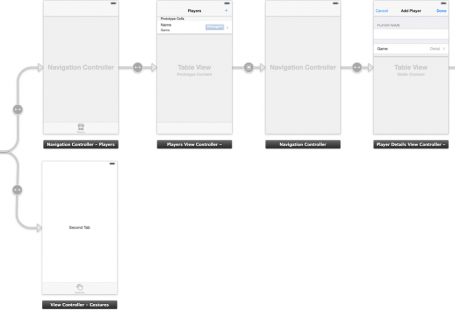Since its first release in 1997, WiFi has evolved into the standard technology for devices to connect to a network and access the Internet. WiFi uses radio waves and wireless technology, allowing users great mobility and flexibility in connectivity. But there is much more to WiFi than just connecting our devices to a network.
Meaning of WiFi
The meaning of the term Wi-Fi, an acronym for Wireless Fidelity, indicates a wireless networking technology that allows electronic devices to connect seamlessly to a network via radio frequencies. The network, called Wireless Local Area Network (or “WLAN” for short), allows devices such as smartphones, tablets, laptops, and computers to connect to the Internet and communicate with each other without the need for physical cables, such as Ethernet ports.
Most wireless networks are typically set up using a router, which acts as a hub for transmitting the wireless signal or WiFi frequency. Due to their simplicity and ease of access, WiFi networks have become common in various places, including:
- business offices,
- airports,
- hotels,
- coffee shops,
- libraries,
- and other public spaces.
This, however, raises security concerns, as some public networks do not have adequate security protocols, making it possible for hackers to gain access and steal personal or confidential information.
How does WiFi work?
WiFi works by transmitting radio waves at various frequencies to provide wireless Internet and network connections at varying speeds. Commonly grouped into 2.4GHz, 5GHz, and 6GHz frequency ranges, the higher the frequency of the WiFi band, the faster the Internet speed. However, depending on your needs, higher frequency is not always better. Lower frequencies, such as 2.4GHz, travel farther and offer greater range at slower speeds than 6GHz, which offers faster speeds and better performance, but less range.
To provide an efficient and reliable connection, WiFi uses one of several IEEE 802.11 protocols, a set of standards developed by the Institute of Electrical and Electronics Engineers (IEEE), to determine the specifications of the WLAN. The most popular protocols are 802.11a, 802.11b, 802.11g, 802.11n, and 802.11ac, each of which provides a unique set of parameters, such as operating frequency range, maximum data rate, and modulation techniques.
WiFi works as a two-way communication between a device and a router. When a device wants to connect to a WiFi network, it sends a broadcast message, called a “probe request,” which searches for available networks nearby. The router, more generally known as a WiFi “access point,” receives the request and responds with its own broadcast message called a “beacon,” which contains the network name (SSID), the type of encryption used (if any), and the signal strength (RSSI).
Once the access point beacon is received, the device connects to the network by sending an “authentication request.” The access point then verifies the device’s credentials (e.g., WiFi password) and assigns it an IP address. At this point, the device is officially connected to the WiFi network. It can access the Internet if the network is connected, or it can communicate with other devices on the same network.
Types of Wireless Networks
The four main types of wireless networks are:
- Wireless LAN
- Wireless MAN
- Wireless PAN
- Wireless WAN
Each type is unique in its range and connectivity requirements and can be used for specific applications and use cases.
Wireless LAN (Local Area Network)
As mentioned, WLANs are widely known as the most popular and commonly used type of network in commercial and residential applications or use cases with limited coverage areas. They typically offer high speeds but have limited range, so these networks are often designed with multiple access points to ensure adequate coverage.
Wireless MAN (Metropolitan Area Network)
As “metropolitan” indicates, MANs are typically used for use cases that require more extensive coverage, such as a college campus or a city center. MANs, in turn, offer much greater range, but are often not as fast as WLANs.
Wireless PAN (Personal Area Network)
This type of wireless network is designed to connect a minimal number of devices within a very small coverage area, such as a single room. They can also be used for medical devices inside a person’s body that require a WiFi connection to function. A wireless PAN is best suited for applications that require low power consumption and short-range connectivity.
Wireless WAN (Wide Area Network)
As a larger, longer-range wireless networking option, a WAN is used for large coverage areas, such as an entire region, state, or country. They are commonly used in cellular networks and satellite communications and typically comprise multiple LANs and MANs together to provide Internet access to a large area.
Public WiFi: What Are the Risks and How to Stay Safe
Public WiFi, also known as “open WiFi,” is used by people who need an Internet connection while away from home. It is common in cafes, hotels, airports, and other public places. Public WiFi may be free, but security costs can be high.
Consider a research conducted by Spiceworks that shows that 61% of employees use company-owned devices on public WiFi networks. It is therefore essential to ensure the security of these connections. To combat the security risks associated with using a public WiFi network, users must take precautions to protect their data and devices.
Public WiFi Security Risks
Using public WiFi networks exposes you to a number of security vulnerabilities. Here are three of the main ones:
- Man-in-the-Middle (MitM) Attacks: MitM occurs when a hacker intercepts communications between a client and a server. Any data transmitted between the two can be stolen, including login credentials, banking information, and personal information.
- Rouge Wi-Fi Networks: Hackers can create fake WiFi networks that mimic legitimate ones, but are actually designed to capture data. Users can connect to these networks thinking they are secure, but it is actually a ruse to steal their data.
- Malware Introduction: Cybercriminals can use public WiFi networks to infect devices with malware. If your device is not updated with the latest security patches, it can be vulnerable to these attacks.
What data is at risk?
All data transmitted over a public WiFi connection is at risk of interception, including:
- Personally identifiable information: addresses, credit card numbers, and other sensitive personal data, all of which fall under PII.
- Login credentials: Usernames and passwords can be captured and used to access accounts.
- Emails: Any email sent or received can be intercepted.
- Text Messages: Any messages sent or received via a phone connected to public WiFi are interceptable.
How to Use Public WiFi Safely
Using public WiFi can be risky, but sometimes it is unavoidable. However, there are ways to stay safe. Here are some tips:
- Set your WiFi connection settings so that it does not connect automatically.
- Make sure that the websites you share data with (including login credentials) are HTTPS and not HTTP.
- Avoid using mobile apps to log into an account over public WiFi, as the app itself may be insecure (much harder to detect).
- Avoid accessing sites such as online banking while on public WiFi.
- Avoid free and open public WiFi networks, that is, those that do not require a password to access.
- Turn off file sharing across networks when you’re on the go.
- Log out of your accounts when you have finished using them.
- Use a virtual private network (VPN) to protect yourself from MitM attacks. Some examples of VPN products are NordVPN, ExpressVPN, and SurfShark.
- Consider using a travel WiFi router: your mobile Internet connector can connect more securely when you’re away from the office.
- Be Alert: Scams and fraud can happen at any time, but being aware of security risks gives you the ability to know how to stay safe.
Remote workers and professionals who access sensitive data or log into accounts with corporate credentials should be aware of the risks of using public WiFi and use due diligence to protect their data and devices. For more information on what organizations and professionals can do to combat public WiFi issues, see resources and recommendations based on Proofpoint’s User Risk Report.


